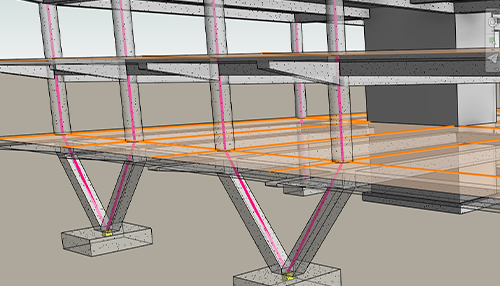As Revit is currently recommended as central to physical and analytical model coordination and its analytical model geometry can be accurate and fully versatile, the nature of the Revit-Robot interoperability was adjusted. A truly bidirectional geometrical exchange is focused on the analytical model and its material and sectional properties.

The Analytical Driven Modeling approach for Revit introduces new enhanced structural modeling capabilities for analytical modeling.
The Revit 2024 release introduced a new way of defining structural loads. Point, linear and area loads are hosted by analytical members and panels and you can constrain them to the geometry of the element. All the new load definition is fully transferred to the Robot Structural Analysis model.
Other improvements to the Revit - Robot Structural Analysis link:
- Prevent the import of structural loads defined outside the host boundary from Revit to Robot (exceptions apply for linear loads on panels partially or entirely outside the host).
- Simplified transfer of the uniform load on panel to Robot.
- Improved transfer capabilities for panel properties which differ in thickness and material.
- Enabled the transfer of analytical panels created by extrusion in Revit.
- Enabled the assignment of the default Steel Design type in Robot when transferred from Revit, based on the analytical member Structural Role defined in Revit.
- Enabled the round trip of steel design parameters between Revit and Robot.
- Enabled the grid position update when edited in Revit and sent to the Robot model.
- Enabled the transfer of arc members from Revit to Robot.
- Enabled the creation of rigid links while transferring analytical links form Revit.